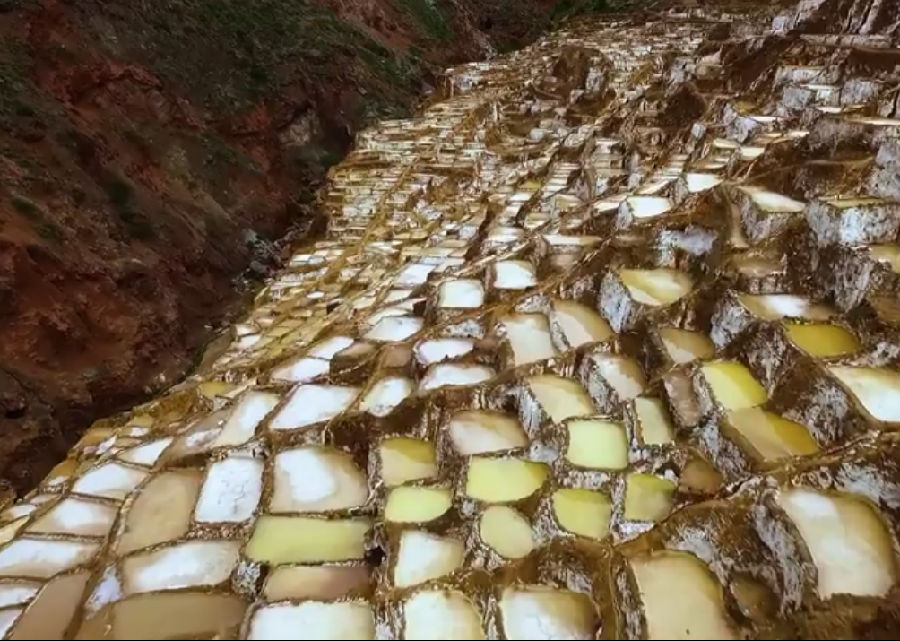Covering the mountainside in Maras, Peru,
在秘鲁马拉斯的山坡上,
thousands of manmade ponds sit exposed to the elements, as they have for over 500 years.
成千上万的人工水池静静地接受着某些元素的堆积,五百多年来一直如此。
Beneath the Qaqawinay mountain, where these salt pans sit, runs a salt-filled underground spring.
在坐落着这些盐田的Qaqawinay山的地底下流淌着一条地下盐泉。
The pans, each no more than a foot deep, fill with this natural spring water,
这些盐田,每个不足一英尺深,里面却都是天然的盐泉泉水,
which the sun evaporates, leaving behind the natural salt crystals.
随着泉水在阳光下蒸发,剩下的便是天然的盐晶体。

Created between 500 and 1000 A. D., it was the Incans who built them up into what we see today.
这些盐田建于公园500年到公园1000年间,后来的印加居民把它们改造成了如今的模样。
Currently there are over 3,000 active pans,
这里现在还有3000多个活跃的盐田,
each one owned by a different family in the Maras community,
每一个盐田都属于马拉斯的某个家庭,
and are hand-mined much the same as when the Incans were here.
他们也基本沿用了从前印加人的手工收盐传统。
Each pool yields about 330 pounds of salt per month.
每个盐田月产在330磅左右。
When the salt has been mined, the pool is refilled and the process begins again.
收完之后,这些盐田会再次注满,等待下一轮结晶收割。
Visiting these pans allows you to marvel at the beauty of nature, and of man's ingenuity.
站在这里,不禁让人感慨自然的大美风光,以及人类的创造才能。












